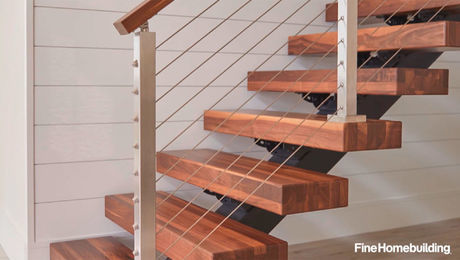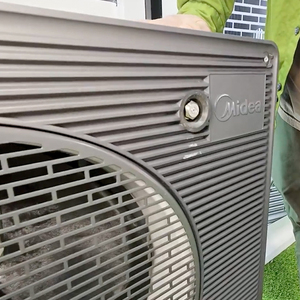I’m designing a new house and want to include expopsed rafter tails. I’m interested in different design styles of this detail. Does anyone have a source for good examples of interesting cuts for the exposed rafter tails?
Discussion Forum
Discussion Forum
Up Next
Video Shorts
Featured Story

Listeners write in about fireplaces and ask questions about sharpening hand tools, easier wiring upgrades, and fixing cedar siding.
Featured Video
Builder’s Advocate: An Interview With ViewrailHighlights
"I have learned so much thanks to the searchable articles on the FHB website. I can confidently say that I expect to be a life-long subscriber." - M.K.
Fine Homebuilding Magazine
- Home Group
- Antique Trader
- Arts & Crafts Homes
- Bank Note Reporter
- Cabin Life
- Cuisine at Home
- Fine Gardening
- Fine Woodworking
- Green Building Advisor
- Garden Gate
- Horticulture
- Keep Craft Alive
- Log Home Living
- Military Trader/Vehicles
- Numismatic News
- Numismaster
- Old Cars Weekly
- Old House Journal
- Period Homes
- Popular Woodworking
- Script
- ShopNotes
- Sports Collectors Digest
- Threads
- Timber Home Living
- Traditional Building
- Woodsmith
- World Coin News
- Writer's Digest


















Replies
Any book on Bungalow or craftsmen style homes should provide you with plenty of examples.
Do you have a plan to ventilate your roof at the eaves?
I'll either use sprayed foam which requires no ventilation or provide ventilation between the rafters and insulation with small screened vents at the top of the exterior wall. I also might create a small soffit that goes only partially past the exterior wall and use soffit vents. Do you have a better solution for this problem?
Most of the exposed tails will be on the end of porch rafters but some will simply be on 2' overhangs.
I''ve done a few of these. On those requiring ventilation I have used a cor-a-vent product (it's a vent that comes in 1" x1-1/2" x4' strips) which runs between each rafter to supply ventilation. But the whole process is this.
1. rafters in place with blocking between each at outside edge of the wall plate. blocking should be 1" shorter than heel height, and have roof angle cut.
2.Tyvek stapled over rafters, and slit at the wall line and wraped down onto the wall over the blocking.
3. place cor-a-vent strip over blocking
4. finish soffit material placed over exposed eave areas to cover the vent strip.
5. Add furring above soffit to bring height above rafter to 1-1/2" .
6. Add 2x2 firring strips over the remainder of the rafters which are covered with tyvek (or similar)
7. Sheath the roof.
8. Install 1x3 facia to cover edge of plywood and soffit mtl. leaving the rafter tail uncovered.
This is the general idea. If I was a bit more computer savvy I would send you a drawing. We usually place the vent strip out far enough so that a bed mold can be placed under it with the vent directly above the top edge of the bedmold. (which is not exactly what I described above but the idea is there) Draw it out or mock it up and you will find what works best for your situation. It's not as involved as it sounds. We usually cut a roll of house wrap in half and work up the roof a sheet or so at a time depending on the situation.
E-mail me if you need more info. I don't get here as often as I'd like, but I do read my mail.
Did you ever hear of carpenter bee's????..ask them what is for LUNCH
Here's how I did it recently. I used cobra vent material trimmed to 2", but became aware of the Cor-a-vent material after the fact. It looks like it is a good product.
Diagram in next message due to the boards incapacity to actualy MANAGE attachments, other than deleting them...grrrr...
Jake Gulick
[email protected]
CarriageHouse Design
Black Rock, CT
Edited 12/31/2003 12:58:03 AM ET by LATEAPEX911
Ok, here goes.
Jake Gulick
[email protected]
CarriageHouse Design
Black Rock, CT
Integrating gutters can be a challenge with exposed tails. Aesthetics and functional issues. Plan ahead for them.